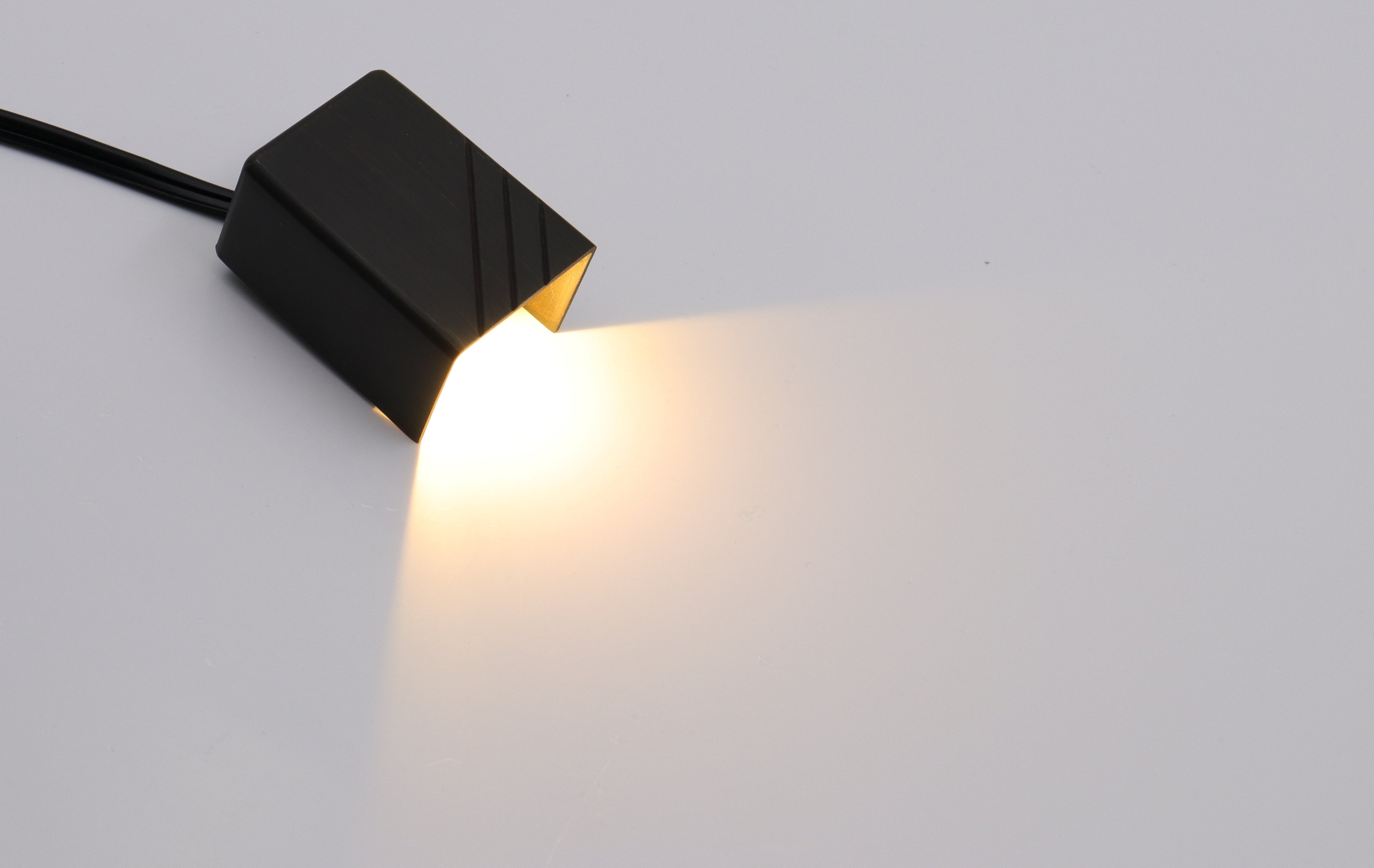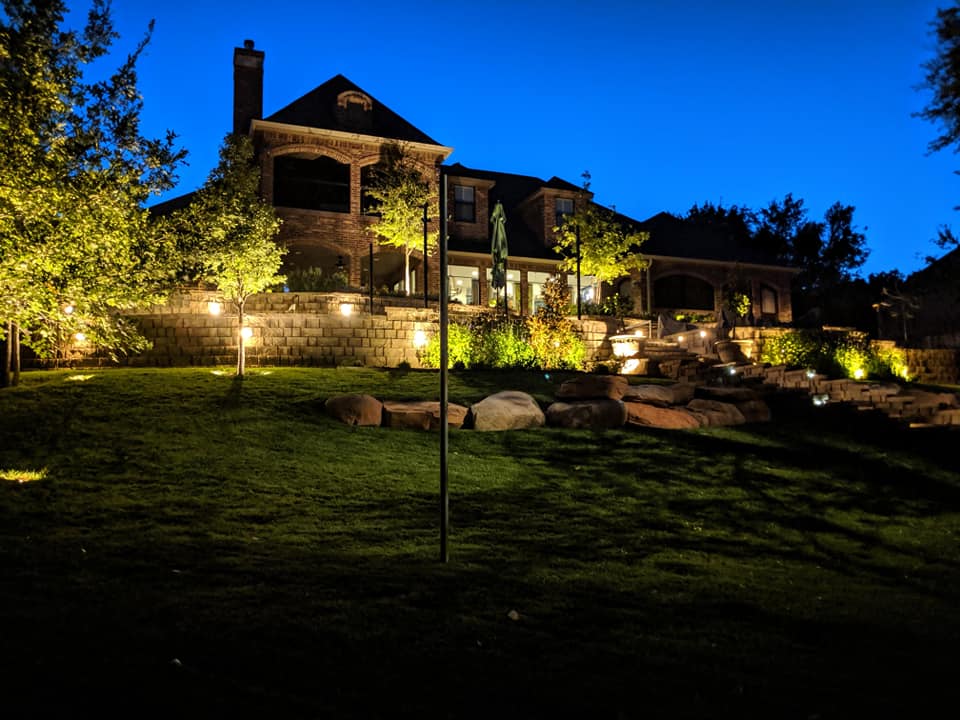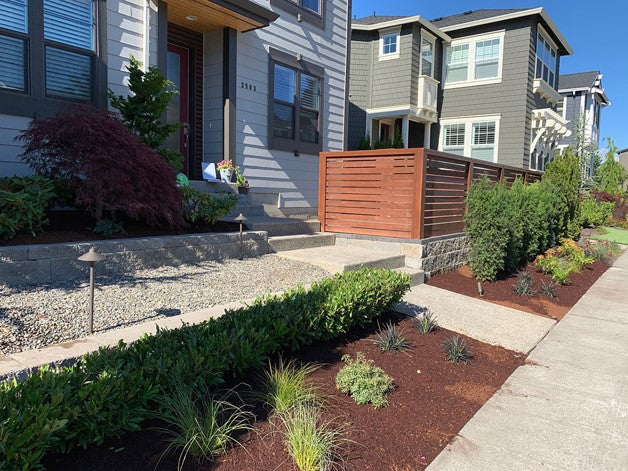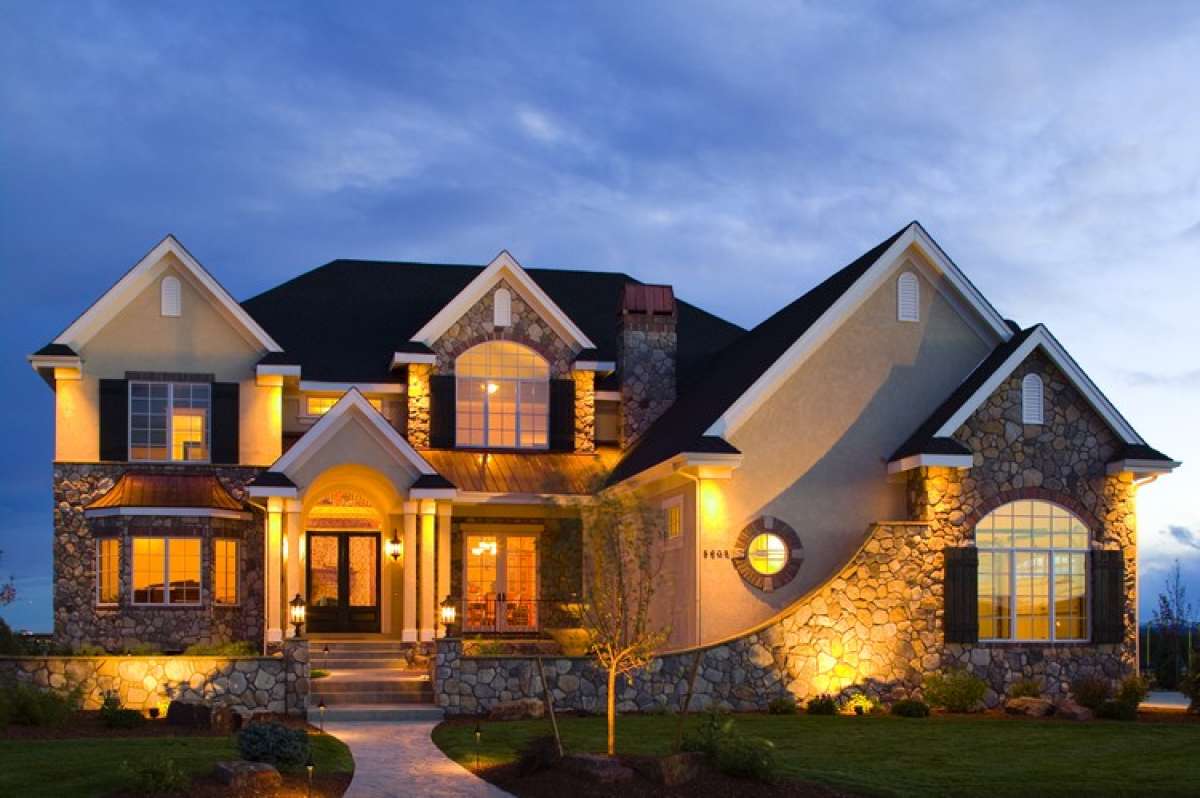Introduction
Curb appeal refers to the attractiveness of a home's exterior to potential buyers or visitors. It creates that critical first impression that can either captivate or deter. Elements like a welcoming front entrance, lush landscaping, and exterior accents work together to boost a home's visual allure.
One aspect often overlooked when enhancing curb appeal is landscape lighting. Strategically placed lighting transforms outdoor areas after dusk, providing a magical ambiance. The right lighting draws the eye to a home's best architectural features while also enhancing security and accessibility. From uplighting towering trees to illuminating winding pathways, landscape lighting boosts aesthetic enjoyment while also serving practical needs.
What Is the Best Lighting for Curb Appeal?
Truly effective landscape lighting for maximizing curb appeal relies on fixtures and bulbs designed explicitly for durable long-term outdoor exposure rather than repurposing cheaper indoor lighting prone to weather damage. Quality outdoor landscape lights withstand moisture, soil contact, extreme temperature fluctuations through the seasons, and ongoing weathering over time without corroding, cracking, or malfunctioning. They continue to enhance ambiance night after night for years with resilience.
But, within the category of purpose-built outdoor landscape lighting, homeowners still enjoy immense flexibility in stylistic detailing. Contemporary homes glow alluringly when illuminated by sleek, modern black fixtures with neutral, understated color palettes. The dark color blends discretely into the surroundings rather than drawing attention to the utilitarian fixtures themselves. Meanwhile, traditional homes shine when accented by antique bronze fixtures with intricately patterned detailing. Vintage filament-style LED bulbs in these fixtures complete the classic ambiance reminiscent of flickering gas lanterns from decades past.
For the most cohesive and polished curb appeal, the finishes and designs of chosen fixtures should thoughtfully coordinate with the home’s existing exterior architectural detailing and materials. Rather than clashing, quality lighting fixtures should continue the style dialogue already established. This ensures illumination seems like an integrated architectural element rather than a haphazardly tacked-on afterthought.
When selecting lighting bulbs, opting for durable, energy-efficient LED bulbs saves substantial energy costs over time compared to less efficient incandescent or halogen options. LED efficiency ensures effortless energy savings without sacrificing brightness levels or ambiance. Some advanced LED bulb models offer added features like convenient dimmability, adjustable color temperatures catering to the desired ambiance, and even Wi-Fi app controls for ultimate lighting customization convenience.
In terms of illumination brightness, balance is essential. Being too intense overpowers the home’s attributes while being too subtle leaves the home sadly fading into the background darkness. Strategic lighting should provide sufficient glow for clear visibility of architectural details, landscaping textures, and exterior living zones without veering into glaring overexposure. For stunning curb appeal with thoughtful ambiance, the most flattering illumination elegantly enhances without overwhelmingly domineering.

7 Targeted Lighting Strategies to Elevate Curb Appeal
1. Uplighting Architectural Features
Uplighting refers to positioning landscape lights low to the ground and angling the beam upwards. The resulting glow dramatizes architectural facets by accentuating texture, contours, and other captivating details. For example, uplights can spotlight brick or stonework, clarify distinctive entryway archways, and highlight window pediments that normally blend in. Landscape lighting can be well achieved by adjusting different angles: Spot Lights For Home Exterior: Choose The Best Fixtures & Transform Your Curb Appeal!
Uplighting proves particularly beneficial when landscaping, like trees or shrubbery, obscures certain architectural features. It pulls focus back onto the home by spotlighting sections that towering foliage above may otherwise shadow. The striking illumination ensures remarkable characteristics still stand out even when blocked from regular sightlines.
Strategically aimed uplighting relies on the contrast between light and shadows to showcase the most intriguing architectural details homeowners want to be noticed. Unlike floodlights that brightly wash an entire home facade, uplights focus attention just on noteworthy elements. This gives depth and dimension to a home's curb appeal.
2. Silhouetting Landscape Features
Silhouetting refers to positioning lights behind existing plants, sculptures, or other prominent exterior features to outline their shape. The lighting behind them creates a glowing backdrop for the feature itself to stand out. Think of a subject posed in front of a bright, open window — the dazzling radiance from behind turns them into a darkened silhouette by comparison.
The silhouette effect draws attention to the feature while preserving a soft, shadowy ambiance. Rather than brightly illuminating the feature itself directly, silhouetting keeps some mystery with depth and contours visible, but details muted into shadowed mystery. This balance between accentuated subject and low lighting levels creates an enticing interplay. The feature catches the eye, while the backdrop glow establishes an intriguing atmosphere.
3. Creating Light and Shadow for Visual Appeal
Strategic lighting placement enhances curb appeal by mixing both brightly lit zones and moody shadows. Thoughtfully positioned fixtures sparkle as they shine through water features, bounce off foliage surfaces, or silhouette structural contours. Meanwhile, other garden areas remain swathed in shadow for visual depth and intrigue.
Contrasting bright illumination against darker shadows adds a dimension that uniformly flat lighting lacks in aesthetic appeal. Light dances across purposefully chosen highlights while leaving secondary zones mysterious in the background. This intermingling of light and shadow mimics the intricacy of natural daylight. It showcases multiple facets of the landscape rather than flattening it from an overabundance of light.
The zones of shadow also foster a sense of depth and contour. As garden lights form glowing pools around architectural elements, the darker negative space makes these sparkling oases more pronounced by comparison. The pockets of shadow actually accentuate the bright spots rather than diminishing their impact.
Helpful light and shadow ideas: Landscape Lighting: How to Use Light and Shadows to Create Ambiance for Your Home
4. Downlighting for a Welcoming Ambiance
Downlighting refers to positioning landscape lights high overhead and aiming their beams downward. This showers the space below in a warm, welcoming glow reminiscent of relaxing indoor lighting. The overall effect feels more intimate and inviting than the harsh glare of floodlights.
Strategically illuminating main entry areas, winding pathways, cozy conversation nooks, and other gathering spots reinforces a welcoming ambiance. Guests immediately sense the inclusive environment as it ushers them affectionately inside. For formal garden designs, graceful downlighting adds refined elegance and sophisticated charm.
5. Integrating Lighting into Landscape Design
Effective landscape lighting seamlessly integrates with the existing vegetation, garden beds, and hardscapes rather than overlapping oddly. The fixtures and ambiance should complement the features they accent. Just as thoughtfully planted beds and pavers naturally lead eyes through an intentionally crafted journey, lighting should follow landscape contours smoothly as well.
Within the overall lighting scheme, certain focal points still warrant proper emphasis to highlight striking plants or standout designs. But broadly, the system should avoid appearing randomly placed as an afterthought. Instead, integrated fixtures continue along winding pathways, tracing building lines and spotlighting corner vistas. This cohesion between lights and landscape makes the illumination seem like a natural extension rather than a tacked-on addition. Explore more lighting techniques: 8 Landscape Lighting Techniques That Will Illuminate Your Home

6. Utilizing Timers for Consistent Appeal
Rather than needing to manually flip every individual light on each evening, automated timers easily create a consistent ambiance. Triggering at dusk, pre-programmed systems activate entire lighting networks seamlessly as sunlight fades. This reliability ensures designs dazzle regardless of season or occupancy variables.
Automation also conserves electricity whenever homeowners are away overnight or while vacationing. Lighting shining absently with no audience to appreciate the glow proves energy inefficient. Timers prevent unnecessary usage waste, aligning illumination only with true appreciation.
7. Cross Lighting for Balanced Illumination
While a single direct light can brightly illuminate a focused zone, it often creates glare or leaves other areas dimly lit. Cross-lighting solves this through layered fixtures positioned at varying angles that crossover to reduce harsh shadows. The strategic variation throws light from multiple directions, with intensities blending softly across the space for even, diffused coverage.
This technique mimics gradually shifting natural sunlight throughout the day. Shadows transition imperceptibly as sun beams overlap from adjusting trajectories. Cross lighting reproduces that smooth daylight balance after dark. The angled collision softens shadows for accurately represented colors, details, and depths. Just as with indoor recessed lighting, the blended glow showcases landscaping dimensionalities beautifully.
Feel free to get more landscape lighting design ideas: How to Design a Landscape Lighting System in Your Home?
Final Words
Strategic landscape lighting unlocks remarkable curb appeal potentialities as darkness falls each evening. Blending sparkling spotlights on architectural details against artfully muted negative space adds alluring depth and dimension. Uplighting facades, backlighting foliage as silhouettes, and illuminating winding pathways enhance visual intrigue remarkably. Embrace lighting designs that highlight gems against shadowed negative space to captivate admiring eyes after dusk with stunning dimensional magic. Careful artistic lighting placements create breathtaking curb appeal.






Leave a comment
All comments are moderated before being published.
This site is protected by hCaptcha and the hCaptcha Privacy Policy and Terms of Service apply.